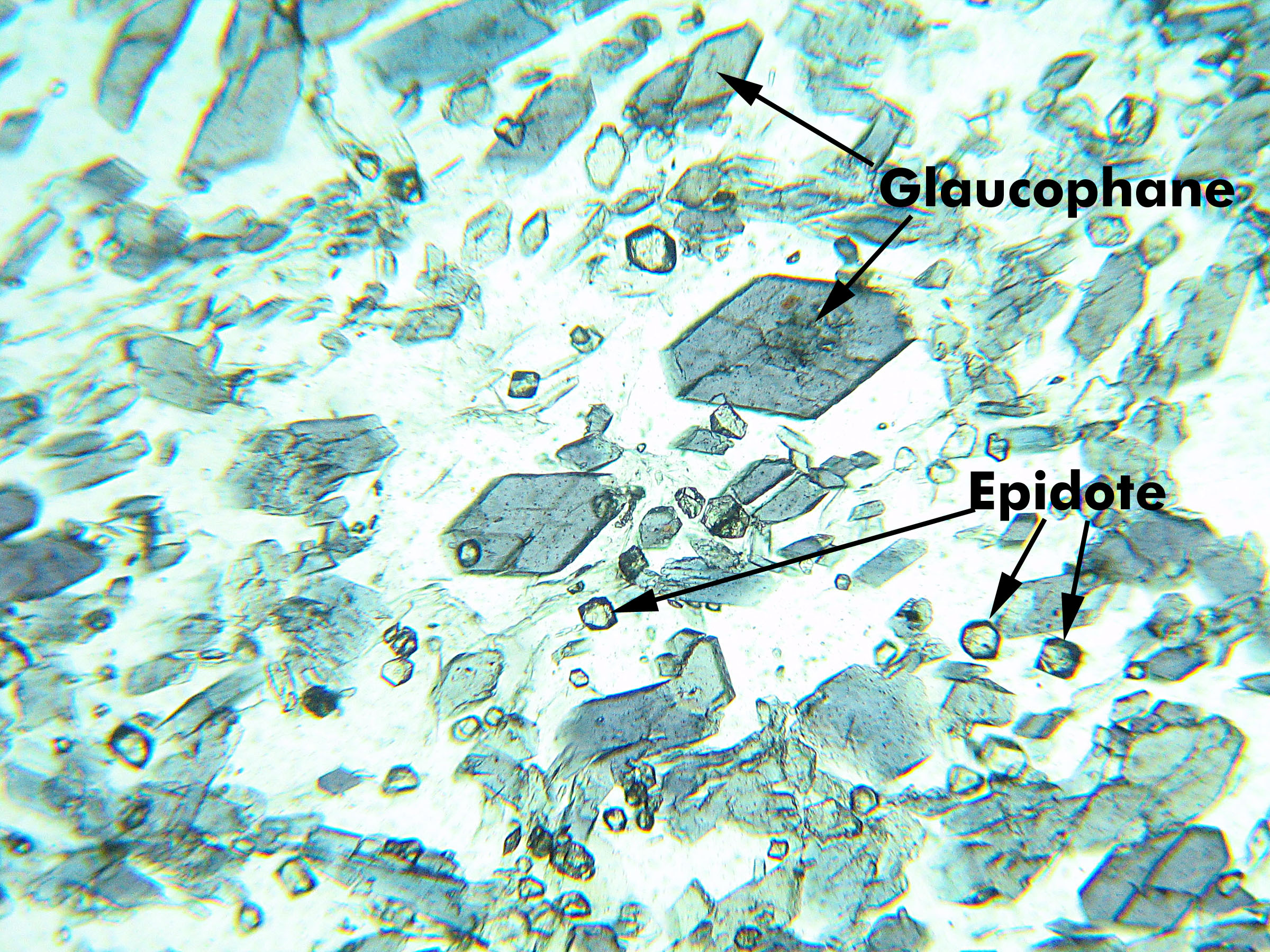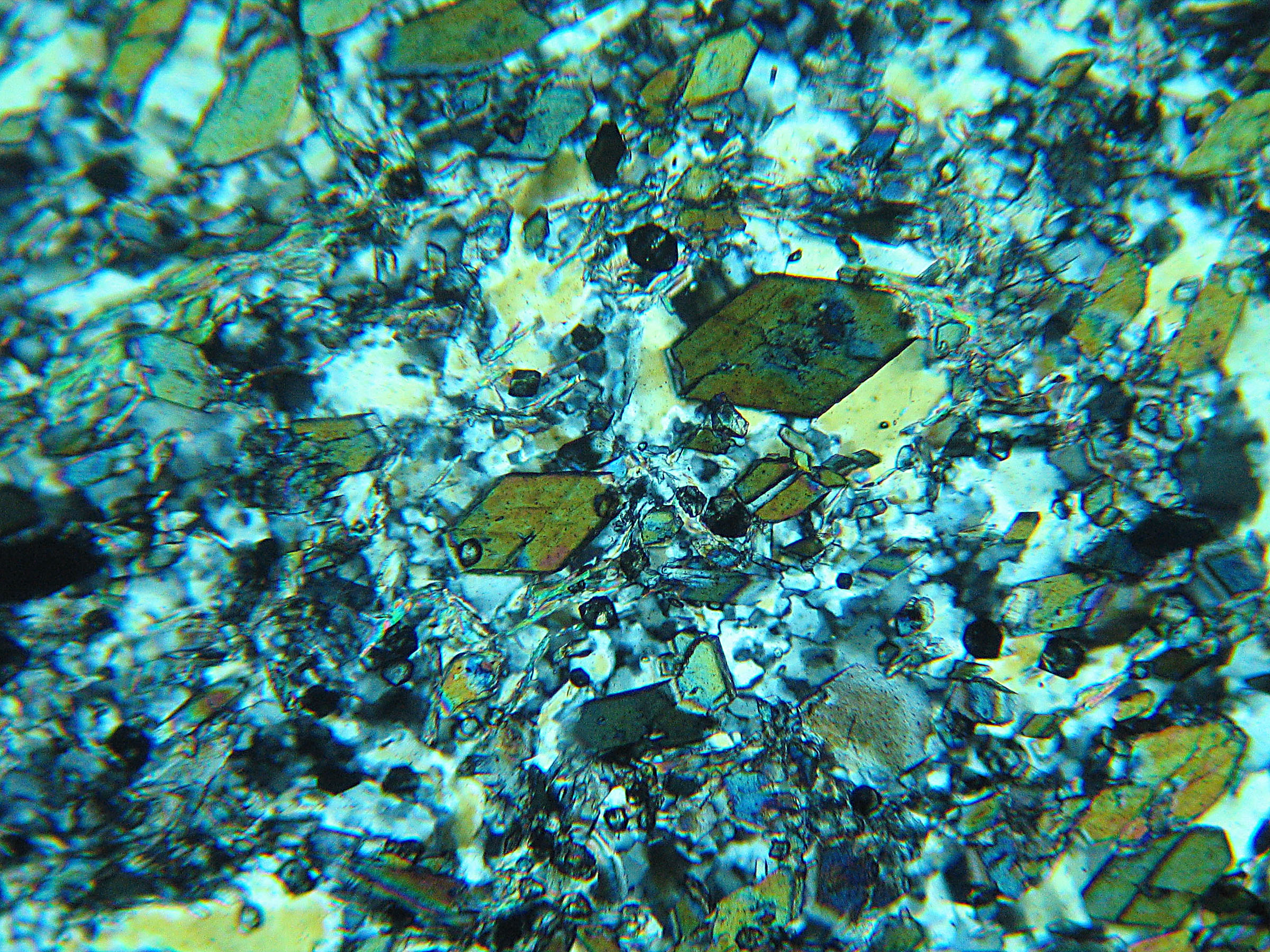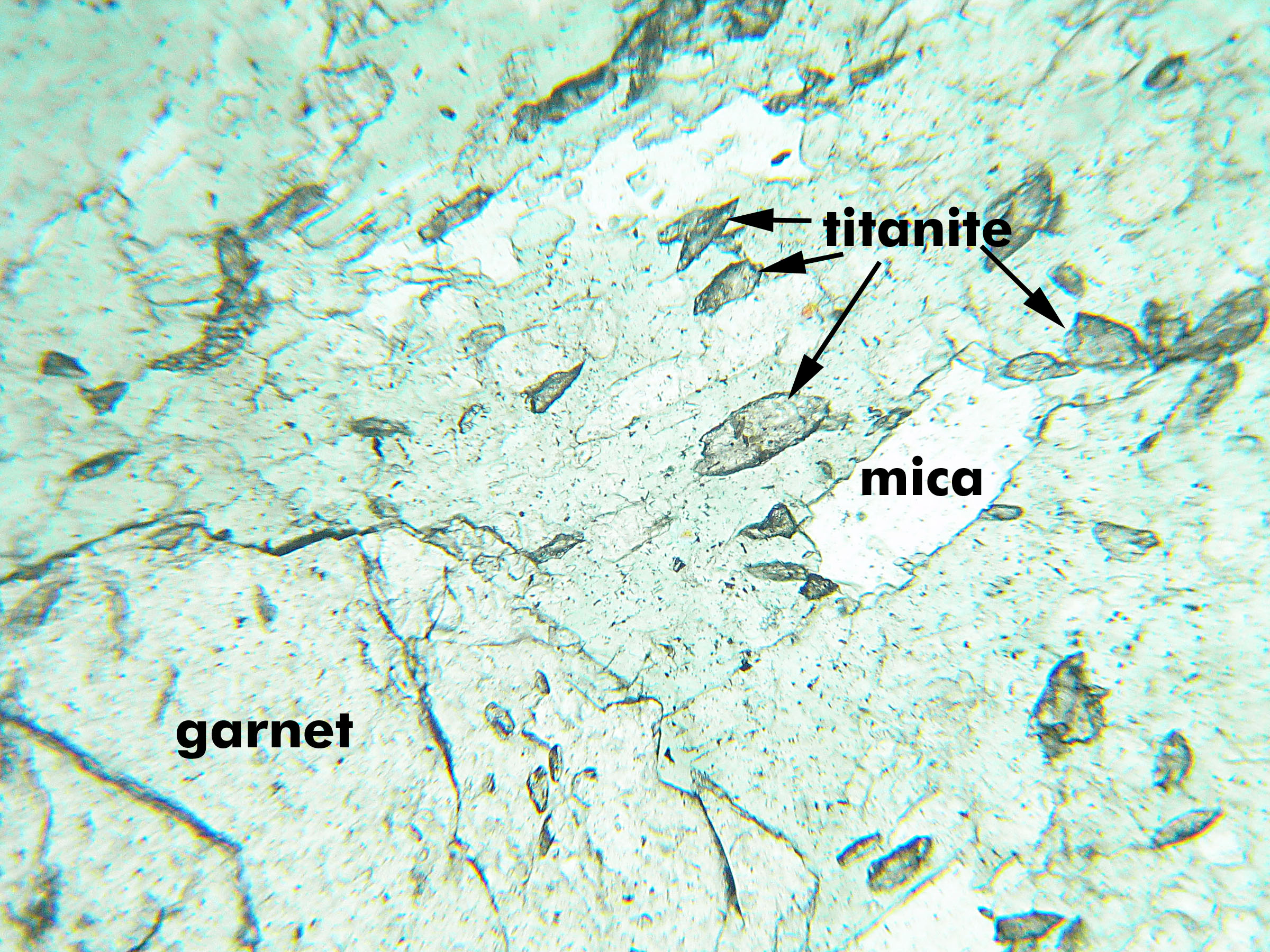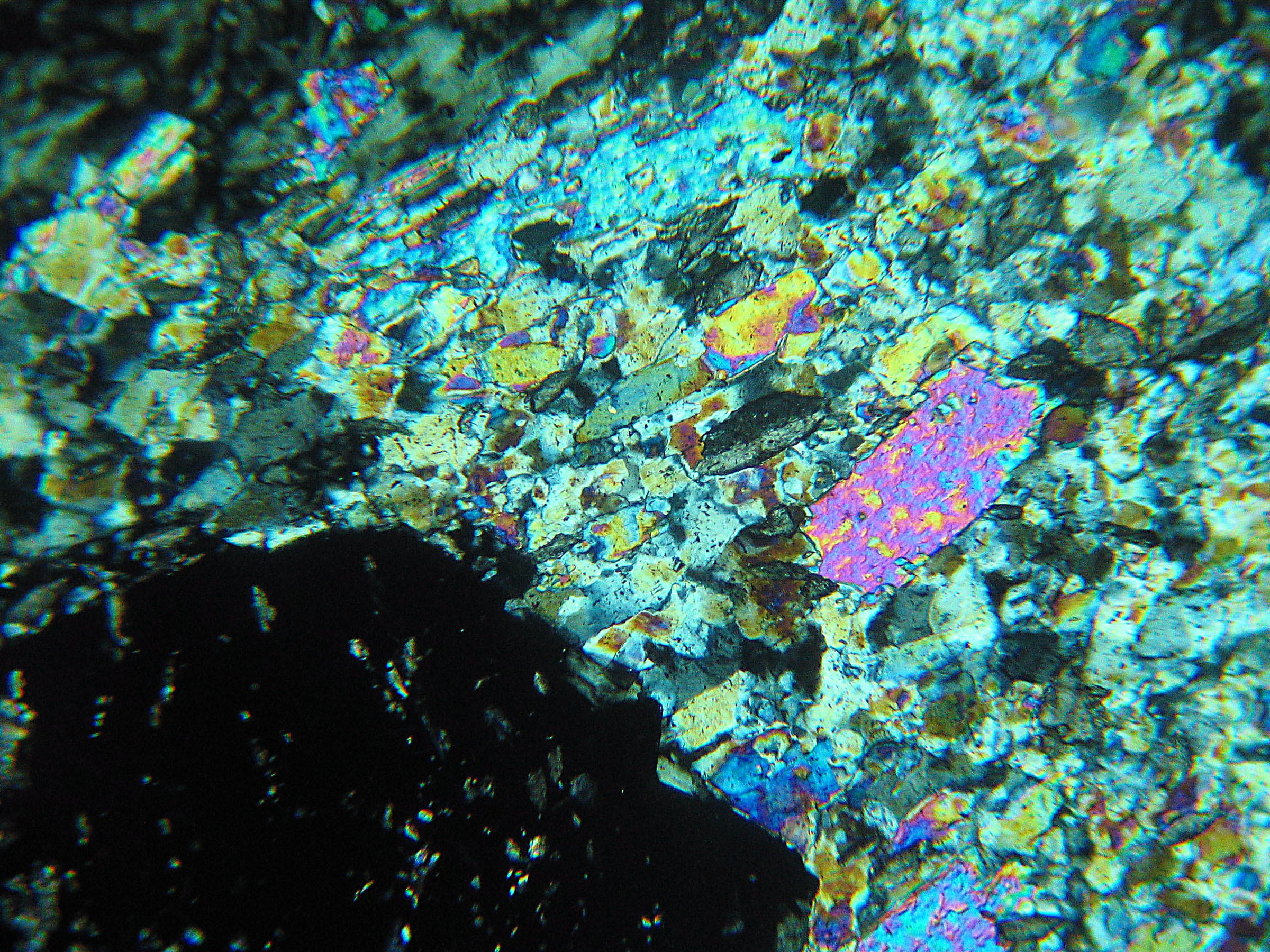|
Sodic Pyroxene
Occurrence and Compositon
|
Sodic pyroxenes have general formula (Na,Ca)(Mg,Fe3+,Al)Si2O6.
The principle end members/varieties are: acmite (also called
aegirine, NaFe3+Si2O6), aegirine-augite
(solid solutions between NaFe3+Si2O6
and Ca(Mg,Fe)Si2O6), jadeite (NaAlSi2O6),
and omphacite (a sodic clinopyroxene in whch the amount of Al
exceeds the amount of Fe3+). Acmite and aegirine-augite
are found in a variety of alkalic igneous rocks. Jadeite and
omphacite are found in high-pressure metamorphic rocks. Jadeite
is typically in bluschists. Omphacite is typically restricted
to eclogites. |
Identification
|
Identifying a mineral as a pyroxene is generally
not difficult, but distinguishing amongst the different pyroxenes
can be challenging. Color and pleochroism
help distinguish acmite and aegirine-augite from other pyroxenes.
Low birefringence and (often)
anomalous blue interference colors
distinguish jadeite from most other minerals. Omphacite generally
has a nondescript light green color,
and low-order nterference colors. |
Important properties
|
·Color
- Acmite and aegirine-augite are brown, yellowish brown or various
shades of green. The color is darkest
when Fe3+ content is high. Green varieties are pleochroic; color
zoning is common. Omphacite is light green and may show faint
pleochroism; jadeite is generally colorless
but may be very pale green or yellow. |
|
·Relief
- Acmite and aegirine-augite have high relief;
jadeite and omphacite have moderate to relatively low
relief. |
|
·Interference
colors - Acmite may exhibit third order interference
colors; aegirine-augite has slightly lower birefringence.
When strongly colored, the color of
these minerals may partially or completely mask interference
colors. Omphacite has considerably lower birefringence
(maximum colors are upper first or second order). Jadeite shows
only first order or anomalous interference
colors. |
|
·Appearance, cleavage,
extinction - Some views of acmite, aegirine-augite, omphacite
or jadeite may reveal four- or eight-sided cross sections with
two cleavages that are nearly perpendicular.
Short prisms or plates showing one cleavage
are more typical. Additionally, omphacite and jadeite both sometimes
exist as granular masses, and jadeite may form fibrous aggregates. |
|
·Twinning
and exsolution - Twinning,
simple or lamellar, may be present. |
|
·Interference figure -
2V and optic sign vary with compositon. |
Similar minerals
|
·Dark colored amphiboles
are similar to dark colored Na-pyroxenes in some ways; light
colored amphiboles are occasionally confused with omphacite or
jadeite. Amphiboles, however, have the characteristic 60o
and 120o cleavage angles
and are length slow. |
|
·Epidote
may have similar color and interference
colors as Na-pyroxene but has only one good cleavage. |
|
·Acmite and aegirine-augite are
distinguishable from other pyroxenes because:
they have deeper colors and stronger
pleochroism; their extinction angle
is small (0-20o); they are length fast; their index
of refraction and birefringence
are larger. |
|
·Omphacite may be hard to distinguish
from other (calcic) pyroxenes but has larger
2V (55-85o) and generally low order interference
colors. |
|
·Jadeite and omphacite are similar
in some ways, but jadeite has lower index of refraction, low
birefringence or anomalous interference colors, small extinction
angle, and is generally colorless. |
|
·Zoisite
may show anomalous blue interference
colors similar to jadeite but has parallel extinction and
higher relief than jadeite.. |
|






